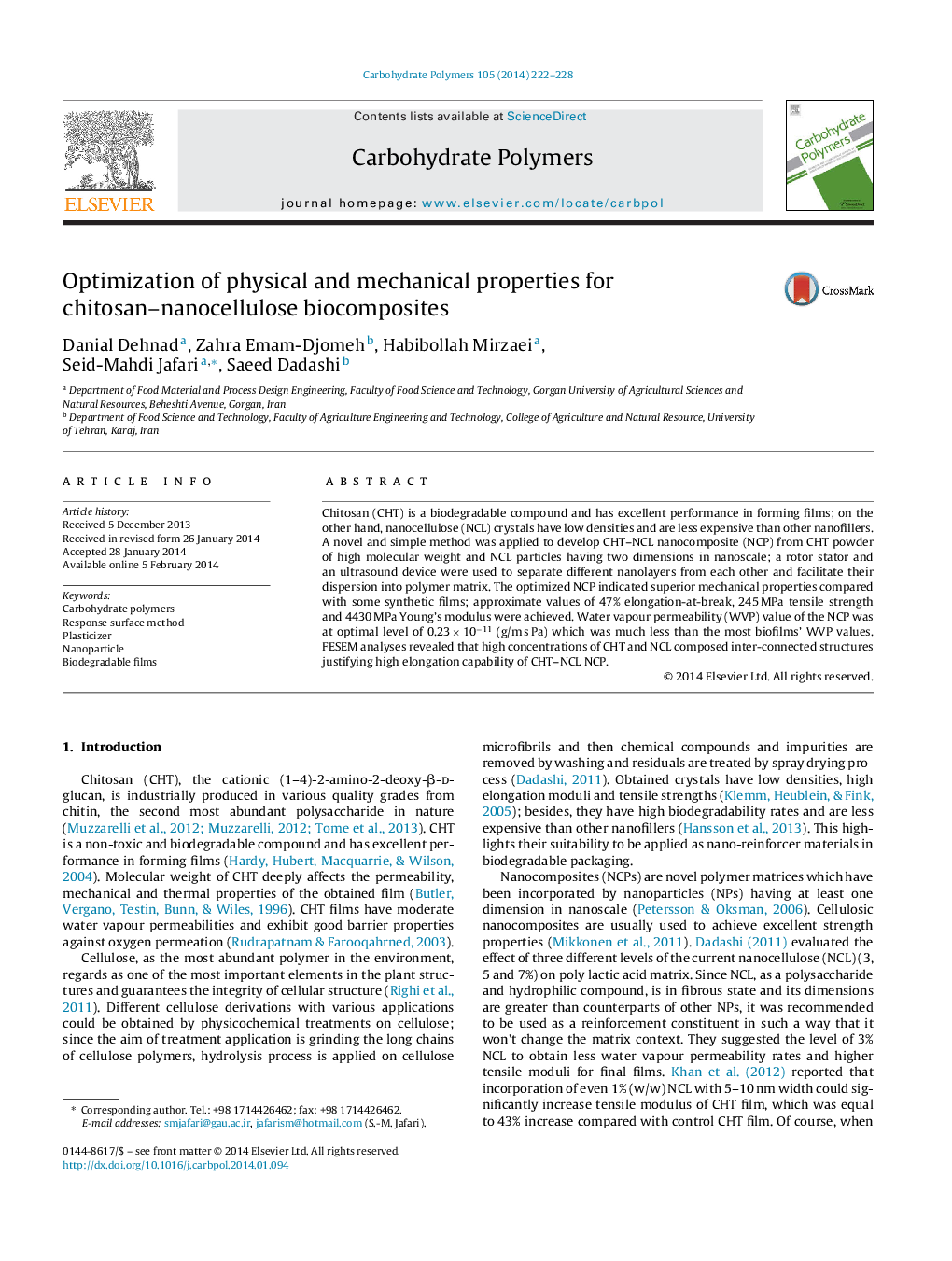| Article ID | Journal | Published Year | Pages | File Type |
|---|---|---|---|---|
| 1386054 | Carbohydrate Polymers | 2014 | 7 Pages |
•Addition of nanocellulose to chitosan polymer improved a* and b* values.•Decreasing glycerol concentration plunged water solubility and WVP values of the nanocomposites.•Nanoparticles were dispersed better into chitosan matrix with increasing glycerol concentrations.•Random direction of cellulose nanocrystals into chitosan matrix was implemented.
Chitosan (CHT) is a biodegradable compound and has excellent performance in forming films; on the other hand, nanocellulose (NCL) crystals have low densities and are less expensive than other nanofillers. A novel and simple method was applied to develop CHT–NCL nanocomposite (NCP) from CHT powder of high molecular weight and NCL particles having two dimensions in nanoscale; a rotor stator and an ultrasound device were used to separate different nanolayers from each other and facilitate their dispersion into polymer matrix. The optimized NCP indicated superior mechanical properties compared with some synthetic films; approximate values of 47% elongation-at-break, 245 MPa tensile strength and 4430 MPa Young's modulus were achieved. Water vapour permeability (WVP) value of the NCP was at optimal level of 0.23 × 10−11 (g/m s Pa) which was much less than the most biofilms’ WVP values. FESEM analyses revealed that high concentrations of CHT and NCL composed inter-connected structures justifying high elongation capability of CHT–NCL NCP.
